How Much Do UK L&D Professionals Make?
The average L&D professional earns £31,650.
When we look closer at the salary ranges, we found that 18% of respondents (the highest number of respondents) earn between £30,000 and £39,999, closely followed by 17% of respondents who earn between £20,000 and £29,999.
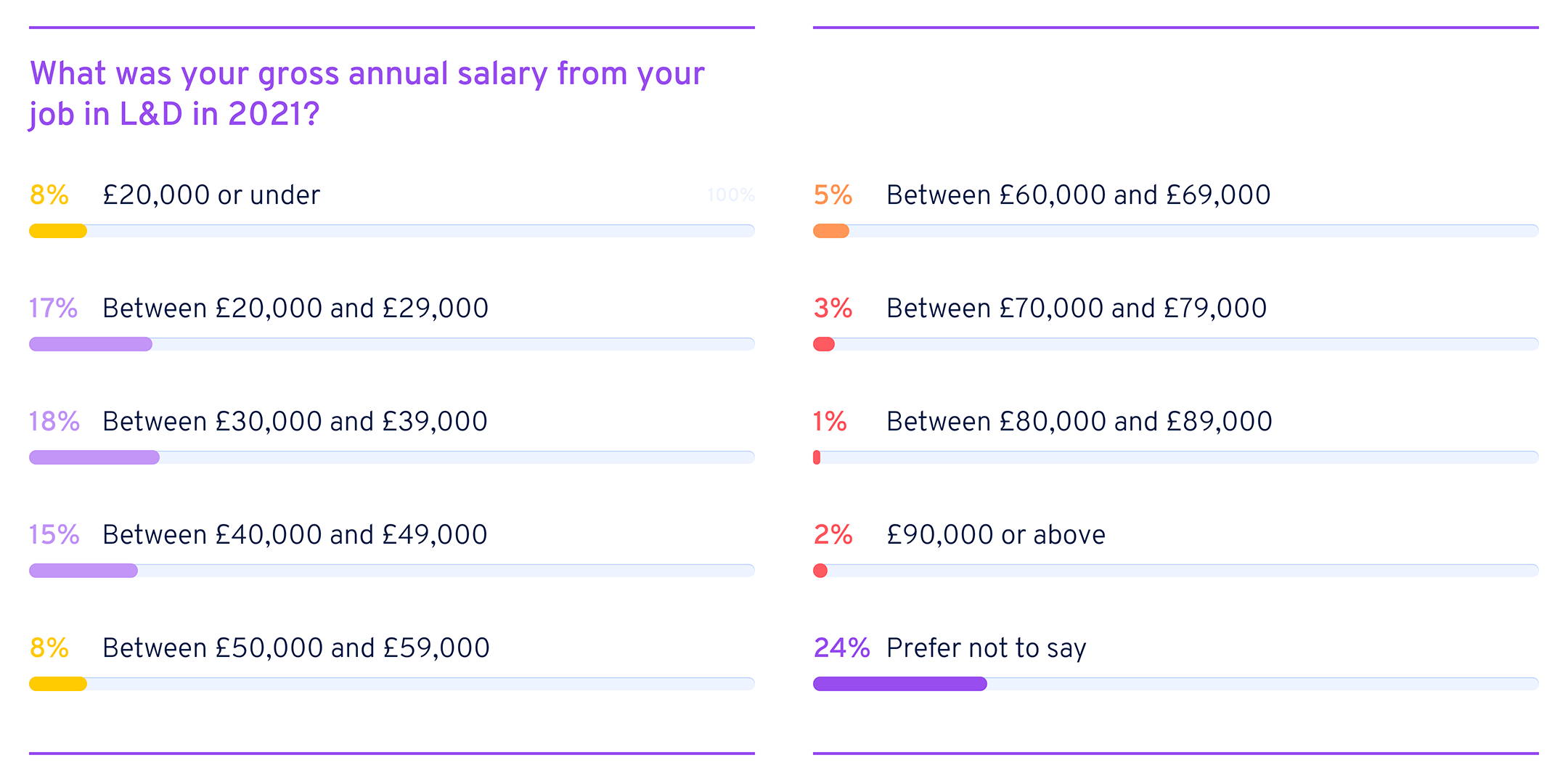
When we look at net responses, 43% of respondents earn less than £39,999, 30% of respondents earn between £40,000-£80,000, and just 3% of respondents earn more than £80,000.
What are the average salaries for specific job titles?
Here’s how our salary survey results look across different L&D job titles.
Learning and development administrator or learning and development specialist salary
The average salary for a learning and development administrator/specialist is £25,450.

We found that 38% of respondents with the job title ‘learning and development administrator’ earn between £20,000-£29,999.
How does this compare depending on how many years someone has worked in the L&D field?
Well, 43% of learning and development administrators (the highest percentage of respondents) with 0-1 years of experience are earning between £20,000-£29,999. This increased to £30,000-£39,999 with 1-3 years of experience.
Learning and development manager/training manager salary
The average learning and development manager makes £41,350.
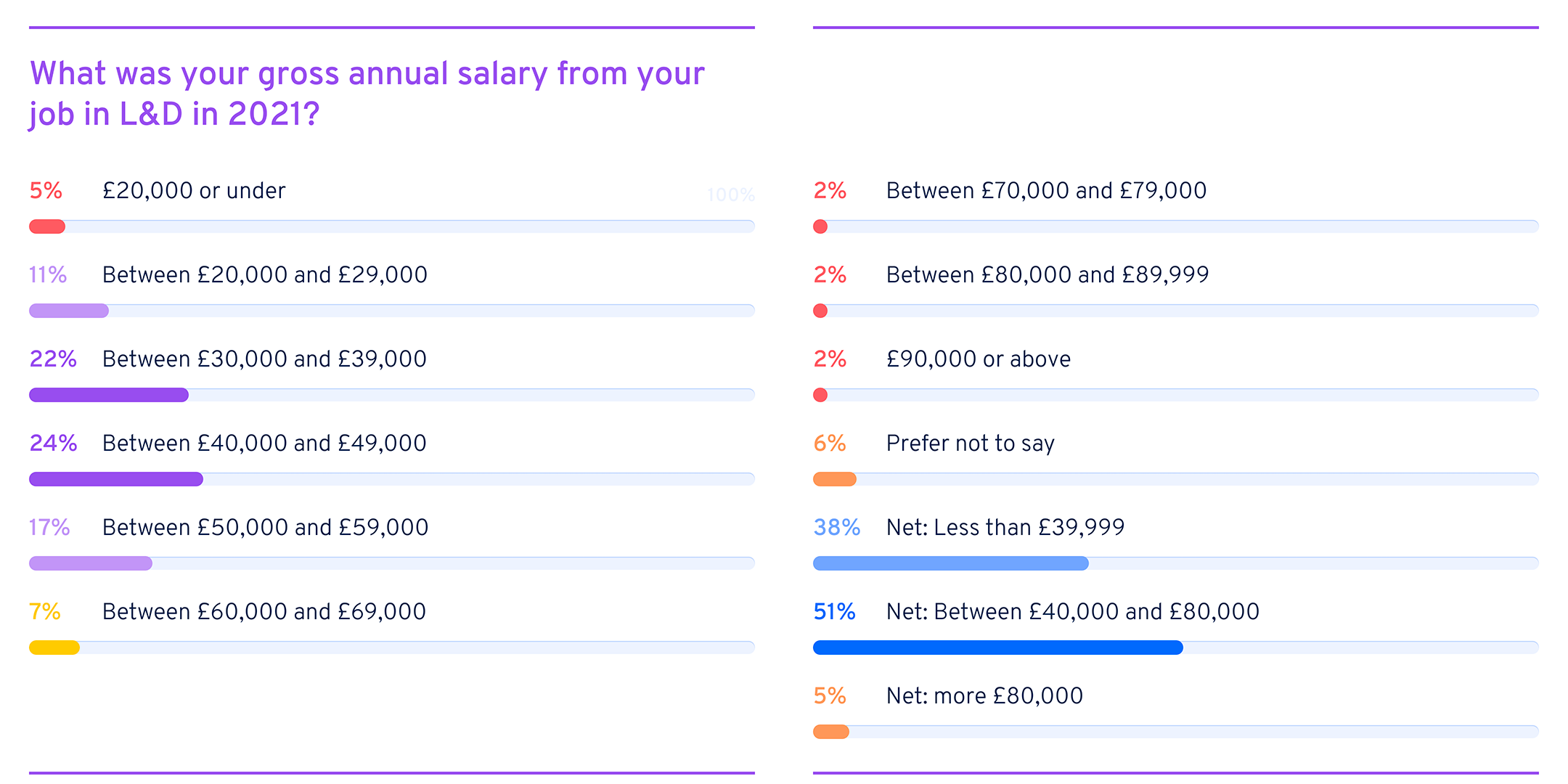
Our survey found that the highest number of respondents (24%) earn between £40,000 and £49,999.
29% of learning and development managers (the highest percentage of respondents) with 0-1 years of experience are earning between £30,000 and £39,999, rising to £40,000-£49,999 (31%) with 4-5 years of experience. With 6-10 years of experience, L&D managers earn between £50,000-£59,999 (24%). As expected, this implies that the more experience you have, the more you earn.
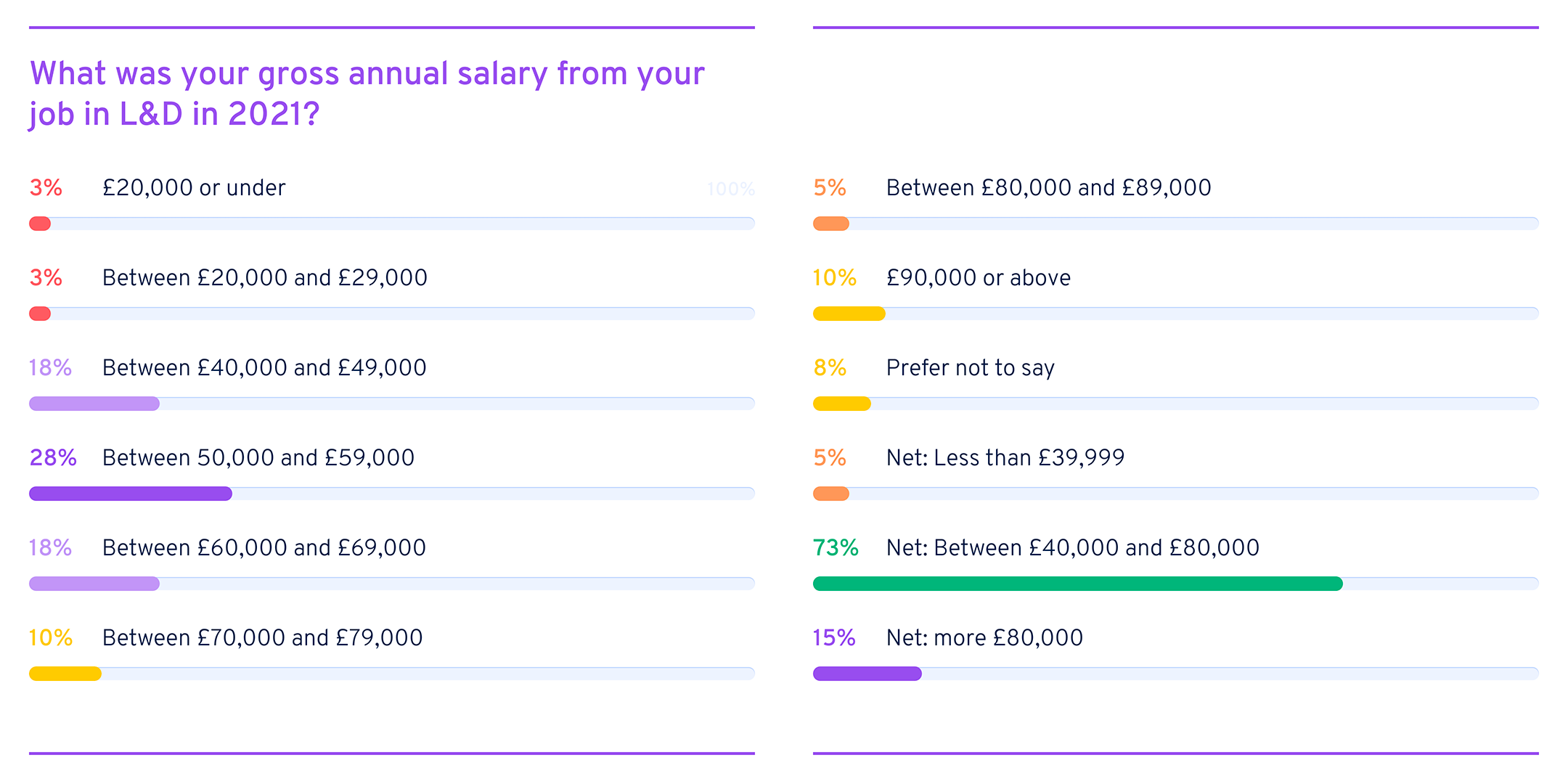
Our survey found that the highest number of respondents in this category (28%) earn between £50,000-£59,999. To achieve this salary or more as head of learning and development, our results suggest you’d need a minimum of 4-5 years of experience.
Which region pays more?
Respondents living in the south of England or in London earn more than those living in the north of England. In the south of England, 42% earn less than £39,999, 30% earn between £40,000-£80,000, and 4% earn more than £80,000. In London, 30% of L&D professionals earn less than £39,999, 32% earn between £40,000-£80,000k, and 4% earn more than £80,000.
In the north of England, 49% of respondents earn less than £39,999, 30% earn between £40,000-£80,000, and 4% earn more than £80,000*
*Figures do not add up to 100% as some respondents preferred not to share their salaries.
Does social grade impact salary?
The NRS social grades are a system of demographic classification used in the UK. We also structured the results of our survey according to these grades.
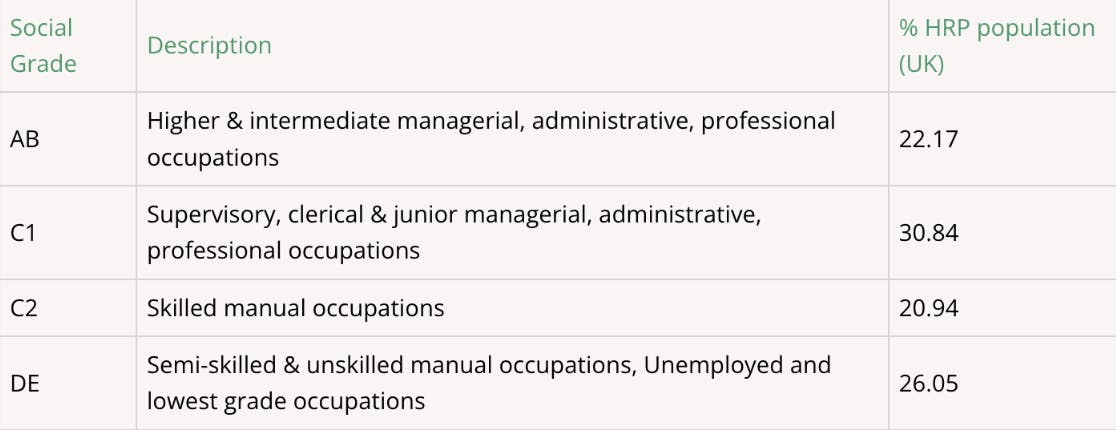
Our survey found that 41% of respondents identifying as ABC1 earn less than £39,999 compared to 57% of respondents identifying as C2DE earning less than £39,999. 32% of respondents identifying as ABC1 earn between £40,000 and £80,000 compared to 19% of respondents identifying as C2DE earning between £40,000 and £80,000. This suggests that people with the ABC1 social grade tend to earn more than those in the C2DE social grade group.

41% of respondents working in the private sector earn less than £39,999 compared to 45% earning the same range in the public sector and 47% of respondents working in non-profit earning less than £39,999. This suggests that non-profit organisations pay less than the private or public sector.
Those earning between £40,000 and £80,000
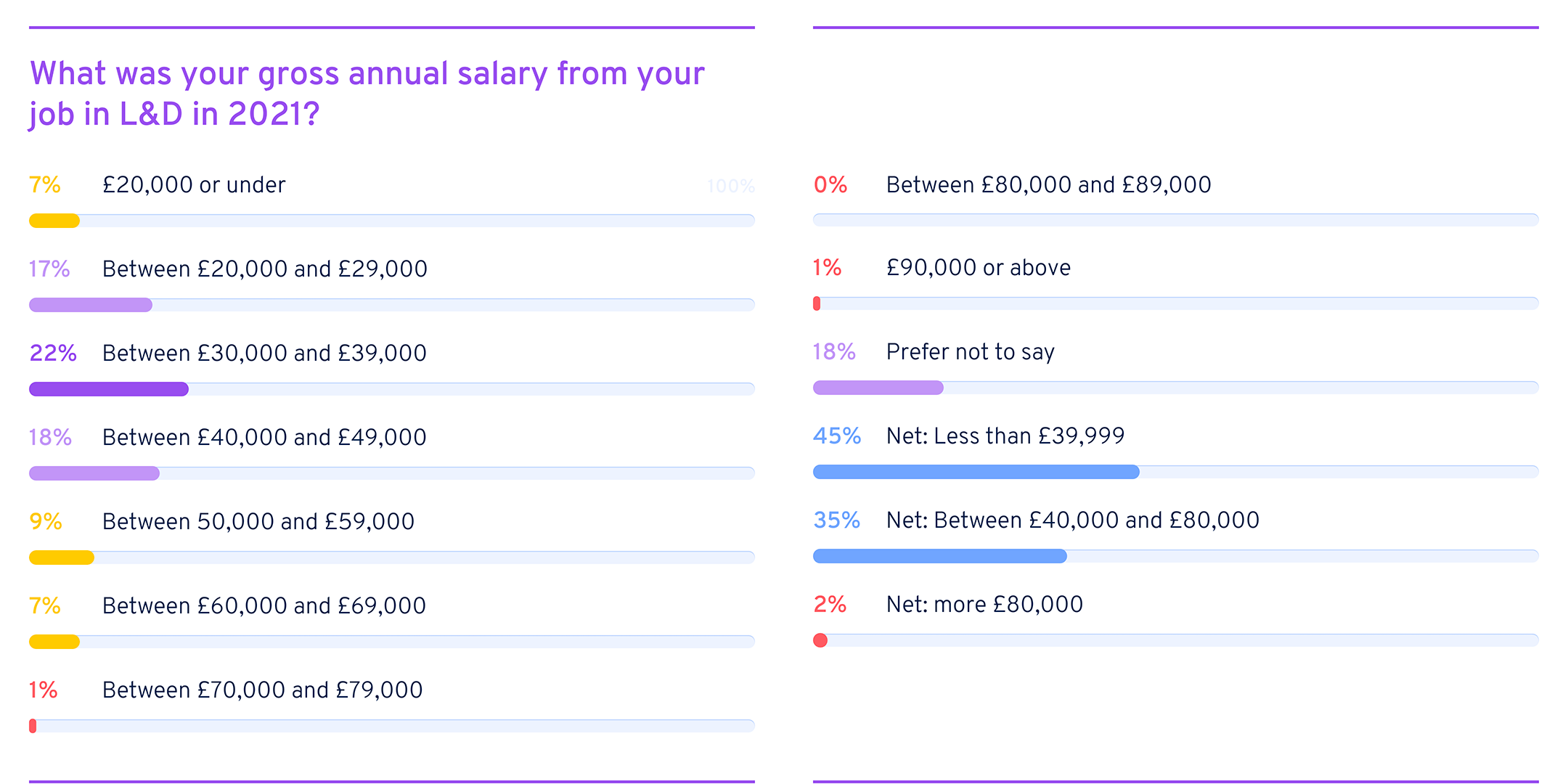
27% of respondents working in the private sector earn between £40,000 and £80,000 compared to 35% earning the same range in the public sector. 28% of respondents working in non-profit earn between £40,000 and £80,000.
Those earning more than £80,000

Our survey showed 4% of respondents working in the private sector earn more than £80,000 compared to 2% earning the same range in the public sector. Just 2% of respondents working in non-profit earn more than £80,000.
This aligns with the view that the public sector pays more than the private sector, with the exception of salaries on the higher end (£80,000 and above).
Do people with an L&D degree earn more?
Of the respondents with an L&D degree, the highest percentage of respondents (22%) said they earned between £30,000 and £39,999, closely followed by 21% of respondents who report earning between £40,000 and £49,999. When it comes to the higher salary band, 6% of respondents with an L&D degree earn more than £80,000.
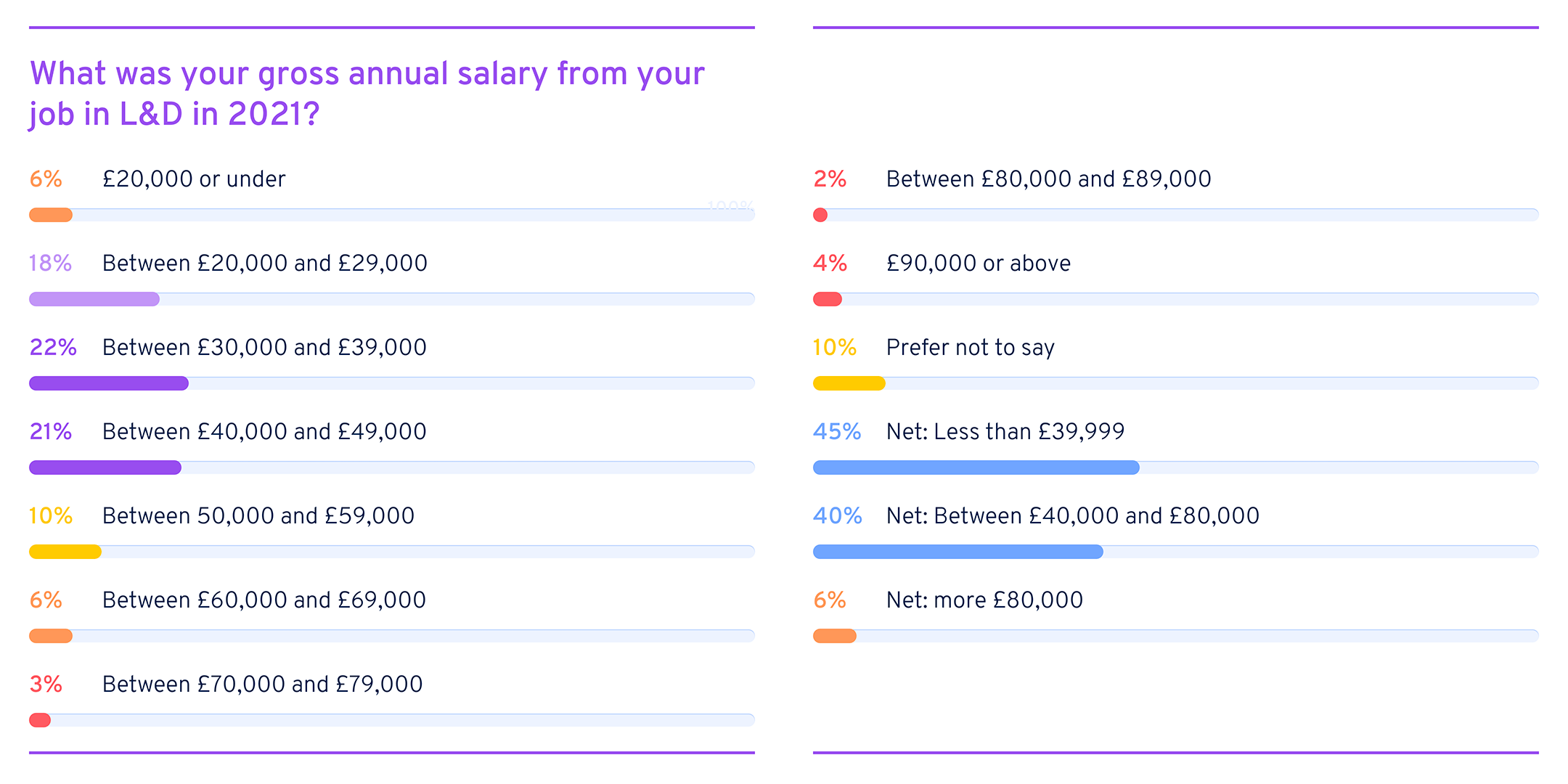
In comparison, of the respondents without an L&D related degree, the highest percentage of respondents (17%) report earning between £30,000 and £39,999, closely followed by 17% of respondents who earn between £20,000 and £29,999.
When it comes to the higher salary band, just 2% of respondents without an L&D related degree earn more than £80,000 vs 6% who do have an L&D-related degree. This suggests that having an L&D degree, particularly when progressing to a more senior role, does indeed translate to a higher salary.
Having an L&D degree, particularly when progressing to a more senior role, does indeed translate to a higher salary.
Does it pay to manage?
Like in many industries and sectors, L&D professionals will progress in their careers by managing people. But surprisingly, our survey revealed that salaries don’t necessarily increase the more people you manage. We found that of the managers managing 1-3 people, 41% (the highest proportion) are earning between £40,000 and £80,000 vs 29% earning the same amount who are in charge of 4-5 people.
This suggests some L&D managers with growing teams may be providing critical support for their organisations, but may not be getting what they deserve when it comes to salary.
Do larger organisations pay more?
Our survey found that just under half of respondents (48%) working in organisations with 250-499 people earn less than £39,999, 26% earn between £40,000 and £80,000, and 3% earn more than £80,000.

For those working in organisations with 500-999 employees, 45% earn less than £39,999, 29% earn between £40,000 and £80,000, and 5% earn more than £80,000.
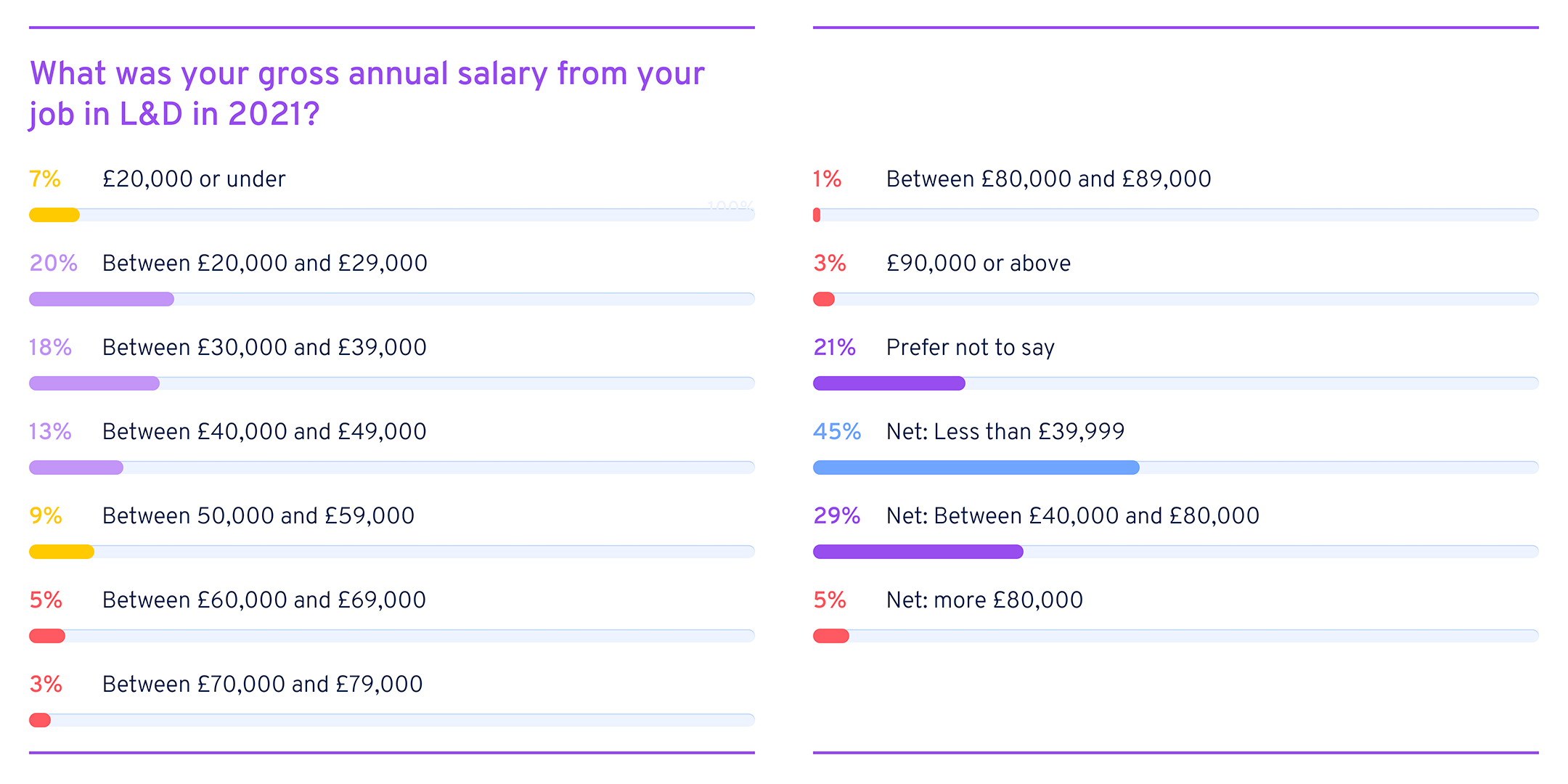
For those working in organisations with 1,000+ employees, 42% earn less than £39,999, 32% earn between £40,000 and £80,000, and 3% earn more than £80,000. This shows that people in larger organisations tend to be better represented in the £40,000-£80,000 salary range. However, we did not see the same trend in other salary ranges.
Are L&D professionals getting pay rises?
Among respondents who have had pay rise in the last 12 months, half (52%) were below the rate of inflation and 45% were as low as 1%-3% – half the rate of inflation. A huge 42% of that group have not had a salary increase at all.
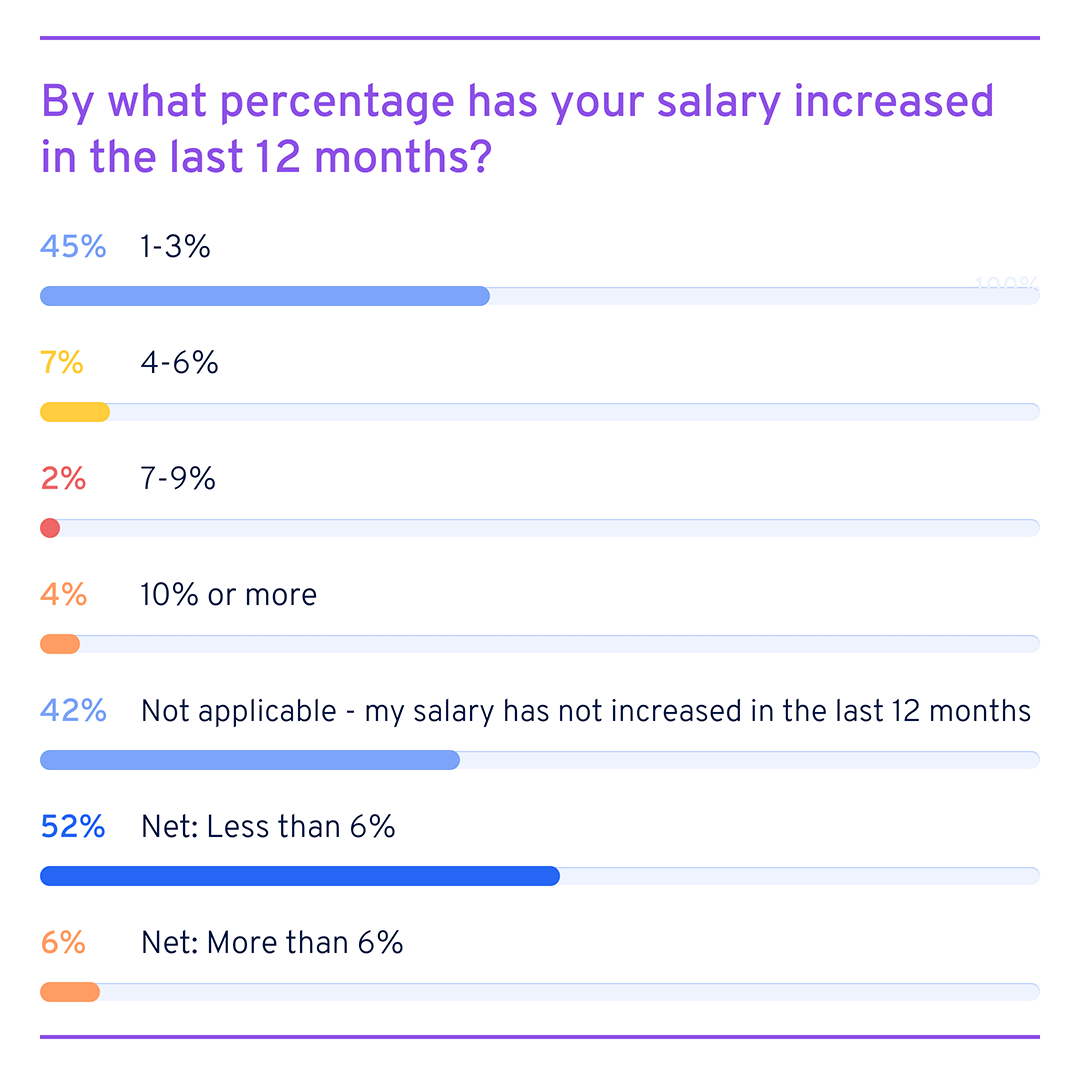
A huge 42% of respondents have not had a salary increase at all in the last 12 months.
45% of respondents have had a 1-3% increase, 7% have had a 4-6% pay rise, 2% have had a 7-9% pay rise, and 4% have had a 10% or more pay rise. This tells us that while some respondents are seeing their salaries go up, the majority of these increases are on the lower end of the scale.
Are you being paid fairly?
You can use these average salary data points to assess whether you’re being paid what you deserve. If you find you aren’t being paid the going rate, be sure to follow our top tips for getting the pay rise you deserve.
Next up? How satisfied are UK L&D professionals with their salaries?

Are You Being Paid What You're Worth?
By downloading, you agree to our privacy policy.


